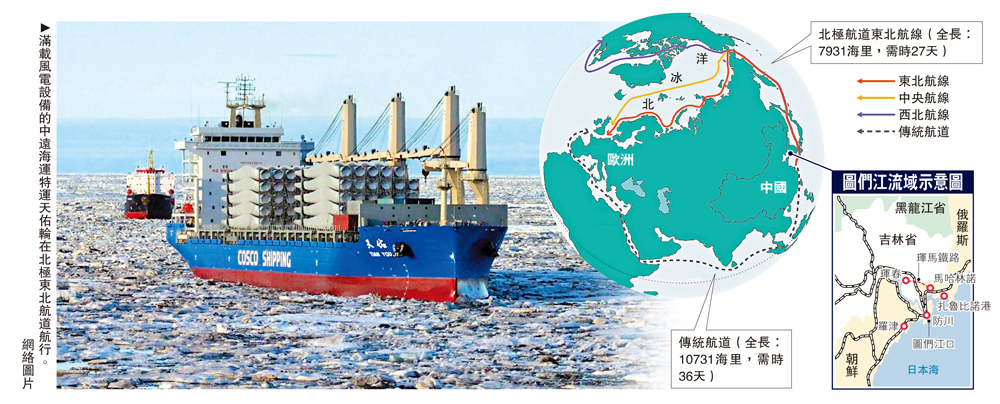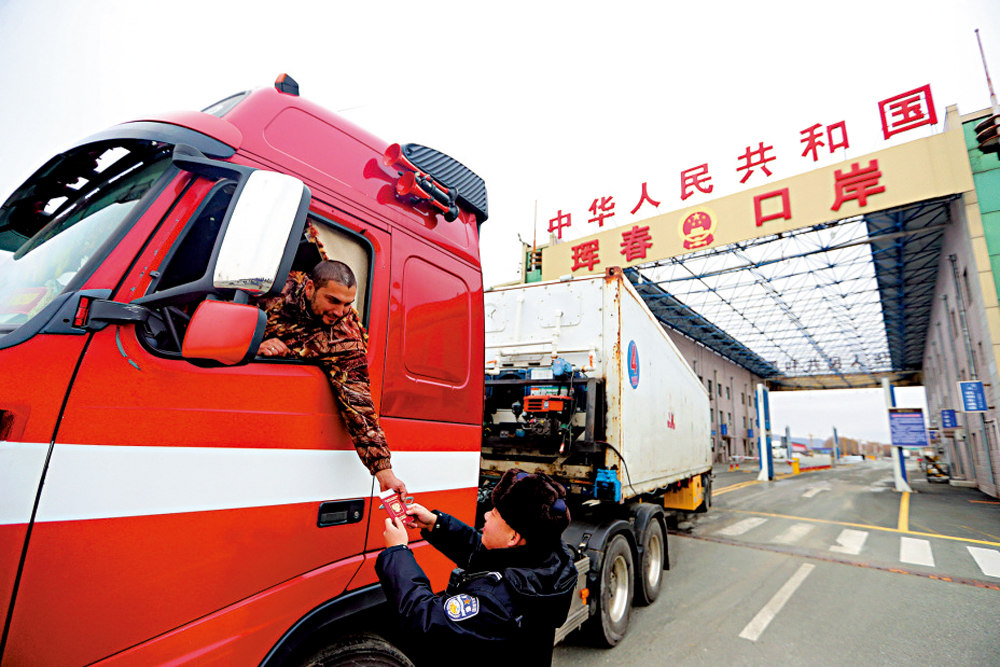Recently, the people of Jilin have mixed feelings. “The first snow in Changbai Mountain came early this year. Does that mean a cold winter?” “Is the melting of the Arctic ice bringing us closer to regular navigation?” The extreme weather in 2022 has left the people of Northeast China puzzled. With the accelerated melting of Arctic glaciers, news about the “Golden Waterway” and the “Ice Silk Road” has gone viral, making foreign trade merchants in Northeast China nervous. The reason is that Northeast China is the closest region to the Arctic shipping route. “Land-sea combined transport” is no longer just a slogan, and more and more foreign trade merchants in Northeast China are heading north via Russia. As they say: “The Arctic Circle is rich in resources. With global warming, the northern shipping routes are becoming clearer, and ships can go farther.”

“The melting of the Arctic ice sheet has provided many people in Northeast China with an opportunity to make money,” says foreign trade merchant Zhu Yiming, who started by selling insoles and now sources new materials from Russia. Zhu believes that the foreign trade market is inevitably shifting toward the Arctic. “So, since 2016, I stopped focusing on North Korean business and shifted to Russia,” Zhu says. “I was lucky. During the tense situation on the Korean Peninsula and the global COVID-19 pandemic, I found a route that allowed me to ‘survive.’ At that time, trade with North Korea barely filled one container every half month. However, with global warming, the northern routes are becoming clearer, and ships can reach farther places.”
Business Opportunities Everywhere: Expanding to Siberia
Recalling the changes in the northern shipping routes over the past 20 years, Zhu Yiming says, “I can really feel global warming. When I was young, I sailed along the northern route, and it was very tough. Icebreaking technology wasn’t as advanced as it is now. After breaking the ice ahead, the ship would immediately freeze again. The 10-centimeter-thick ice blocks were really shocking.” Twenty years later, when he took the northern route again, Zhu says, “I feel great. I made some money from Russian smokeless coal and natural gas.” When asked which Russian city the route reached, Zhu says, “The resources in the Arctic Circle are too rich, especially Russia’s natural gas, which many large enterprises in Northeast China are eyeing. I can only tell you that I went through the Bering Strait to Siberia to discuss cooperation.”
King Crab Becomes a New Signature Product
The Kamchatka Peninsula, located in Russia’s Far East, borders the Sea of Okhotsk to the west, the Pacific Ocean to the east, and the Bering Sea. The king crabs from this area are of excellent quality and are highly favored by consumers in mainland China. On September 6, a batch of king crabs crossed the China-Russia border at the Hunchun checkpoint. After inspection, quarantine, and disinfection, they were transferred to water trucks and sent to markets in Beijing and Shenzhen. A few years ago, the sales of these expensive fresh king crabs in mainland China were not large. After being caught near the Bering Strait, transportation and water exchange often caused losses. Now, through the “Kamchatka-Zarubino-Hunchun” route, king crab has become a flagship product of this Northeast city. Over 90% of Russian king crabs in mainland China are shipped from here, and the total output value of the city’s aquatic industry has exceeded 9 billion yuan.

Accelerating the Seafood Industry’s Expansion in Northeast China
Wang Jindong, one of the earliest merchants to import seafood from Russia, says, “During peak seasons, we can transport up to 50 tons per day. This route is stable, saves time, and is low-cost. With the improvement of foreign shipping routes and domestic and international markets, the demand for king crabs is growing. We will gradually expand into the Hong Kong, Macao, Taiwan, and Southeast Asia markets.” Previously, Russian king crabs had to be transferred through Korea or Japan before reaching China, which increased costs and affected quality. “Now, through the new shipping route, we can catch the crabs from deep-sea waters in Russia one night, and they can be delivered to Northeast China the next day.”
Cross-Border E-Commerce and Overseas Warehouses
As shipping routes improve, some companies are focusing on building overseas warehouses in cities like Ussuriysk and Moscow in Russia. Changda Electronics Commerce Co., Ltd., which operates a cross-border e-commerce platform, provides customs clearance and transportation services for goods exported to countries like Russia. Zhang Fengyuan, the company’s general manager, says, “By using the overseas warehouse model, we can prepare inventory in advance, shortening the overseas consumer purchasing cycle from 30 days to about 10 days. This greatly improves the purchasing experience for overseas consumers and enhances our ability to withstand risks.”
The Impact of the Arctic Shipping Route on Global Trade
The opening of the Arctic shipping route is sure to have a huge impact on the global trade structure and will also affect China’s economic layout. “Global warming is a major challenge for humanity, but it isn’t always a bad thing. At least for the Arctic shipping route, the melting of sea ice is turning what was once a difficult path into a highly anticipated ‘golden waterway.’ Northeast China, which has long been considered an underdeveloped region, is bound to experience more economic opportunities if the Arctic shipping route really becomes ice-free in the summer.”
Foreign trade merchant Zhu Yiming talks about future trends, saying, “The Arctic route can be fully operational without waiting for the ice to melt completely. Ships can share the cost of icebreaking when there is less ice, which is actually very cost-effective. This route can shorten the journey by 7-9 days compared to traditional routes through the Malacca Strait or the Suez Canal.”
Li Tie, vice president of the China Pacific Society and China International Trade Association, explains that from a geographical perspective, China’s “northern opening” largely involves advancing cooperation between Northeast China and Russia’s Far East. The regions near the Arctic Circle and surrounding seas mainly cover Northeast Asia, so Northeast China, with its existing geographical advantages, channels, and mechanisms, is seeking open cooperation with countries and regions in Northeast Asia and the surrounding seas as part of China’s “northern opening” strategy.




